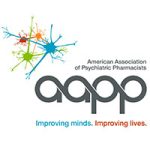Tardive dyskinesia (TD) is a movement disorder that causes a range of repetitive muscle movements in the face, neck, arms, and legs. TD symptoms are beyond a person’s control. These symptoms can make routine physical functioning difficult, significantly affecting quality of life.
Symptoms of tardive dyskinesia can include:
TD primarily occurs as an adverse effect associated with use of certain medications, like antipsychotics, medications for nausea, and medications that treat Parkinson’s disease. Symptoms typically occur after several years of taking these medications, but they can emerge within just a few months. TD can become permanent even after a person stops taking the medication.
Anyone taking an antipsychotic may develop TD, but the risk can be higher for certain people.
Risk factors for TD:
You can help manage the risk by addressing lifestyle factors that increase the potential to develop TD, like smoking, substance use, and uncontrolled diabetes. Proactively taking care of your health by quitting smoking, avoiding substance use, and managing blood sugar levels can reduce the risk of symptom onset.
Other steps you can take include asking your health care provider for routine screening of movement symptoms. Recognizing the symptoms of TD early can help lessen their severity, so these screenings should occur every three months.
You can also ask your provider to review your current medications and discuss options. Although it can still occur, rates of TD appear to be lower with second-generation antipsychotic medications. Long-term use of antipsychotic medication to treat a chronic mental health condition is usually still necessary, but safely adjusting or changing medication may be an option.
Examples of antipsychotic medications include but are not limited to:
| First-generation or older antipsychotics (higher risk for TD): | Second-generation or newer antipsychotics (lower risk for TD): |
|---|---|
|
|
If symptoms of TD develop, your health care provider will evaluate your treatment plan and medication. Your provider may choose to change your medication, or add one specifically designed to improve movement symptoms. It’s important you don’t abruptly stop taking a medication without talking to your health care provider.
Each person responds to treatment differently but there are options available to help relieve symptoms of TD.
| Place in Treatment | Treatment |
|---|---|
| First-line (most evidence) | |
| Second-line (less evidence) |
|
| Third-line (least evidence) |
|
Be sure to talk to your provider about potential drug interactions before starting any new medication. Of note, a class of medications called anticholinergics (e.g., diphenhydramine (Benadryl), benztropine (Cogentin)) should typically be avoided because they can worsen TD.
If your provider recommends a medication, but you are concerned about its cost, Prescription Assistance Programs (PAP) may be able to help. PAP can sometimes substantially reduce medication costs.
Your health care provider will continue to monitor your symptoms and treatment plan, but you can also take an active role in your care to help manage TD:
Exercise can help relieve movement symptoms, including tremors and those related to balance, gait, and flexibility. Exercise also helps balance blood sugar levels and improve hormonal balance for better management of type 2 diabetes.
TD can be very troubling for those who experience it, as well as for their familiy members. Although this condition can have a negative impact on quality of life, an informed treatment plan combined with proactive self-care can help effectively manage TD.
Last Reviewed: June 2024
Provided by

Important Disclosure: This information is being provided as a community outreach effort of the American Association of Psychiatric Pharmacists. This information is for educational and informational purposes only and is not medical advice. This information contains a summary of important points and is not an exhaustive review of information about the topic. Always seek the advice of a physician or other qualified medical professional with any questions you may have regarding medications or medical conditions. Never delay seeking professional medical advice or disregard medical professional advice as a result of any information provided herein. The American Association of Psychiatric Pharmacists disclaims any and all liability alleged as a result of the information provided herein.
©2024 The American Association of Psychiatric Pharmacists (AAPP). AAPP makes this document available under the Creative Commons Attribution-No Derivatives 4.0 International License. Last Updated: January 2016.
NAMI HelpLine is available M-F, 10 a.m. – 10 p.m. ET. Call 800-950-6264,
text “NAMI” to 62640, or email. In a crisis, call or text 988 (24/7).